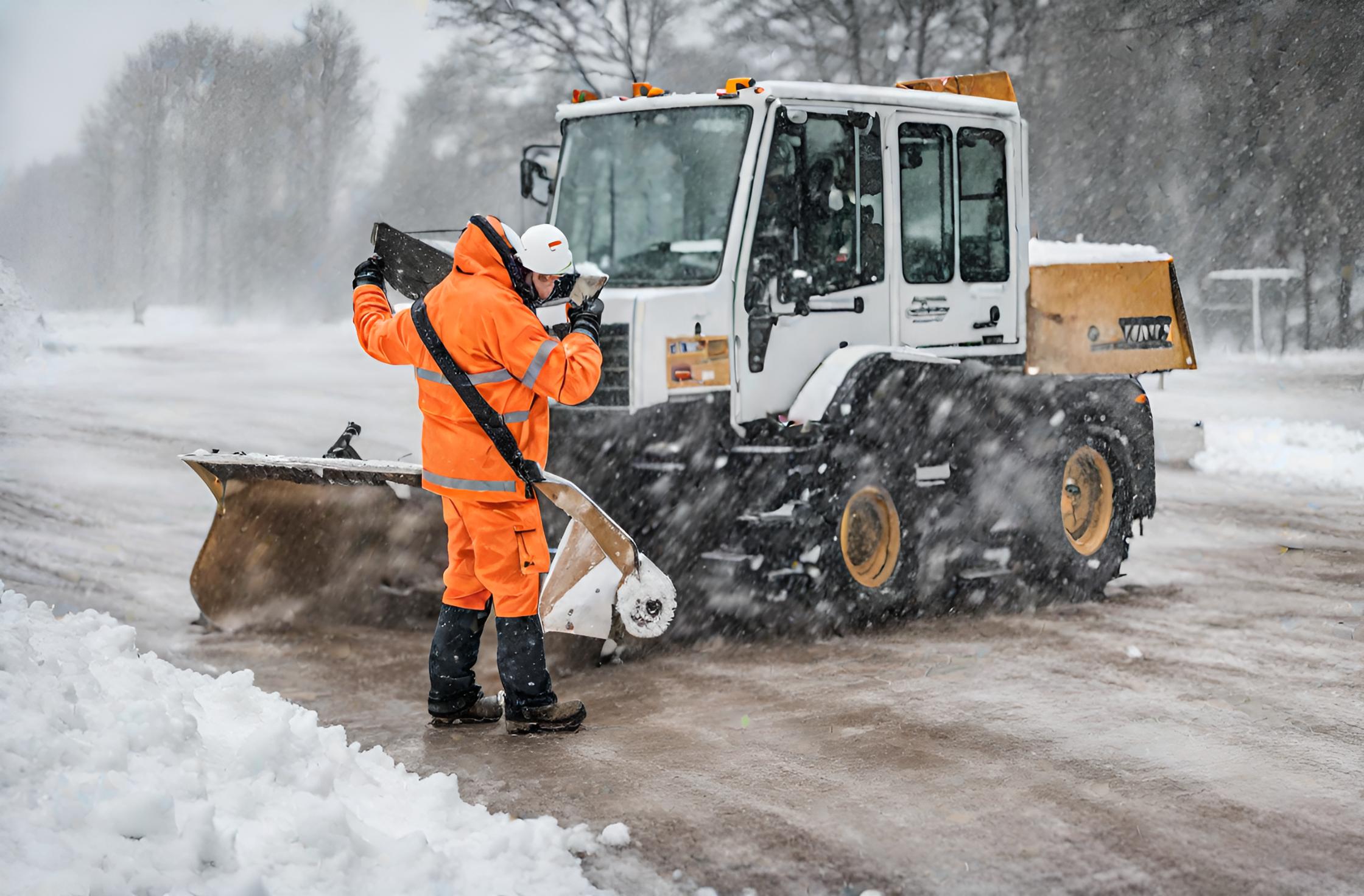The Connected Subcontractor: A New Way of Service Management

In the dynamic service management landscape of 2024, U.S.-based service companies that self-perform services are increasingly turning to subcontracted models to enhance their operational capabilities. However, this shift brings its own set of challenges, particularly in subcontractor management. Companies grapple with issues like poor visibility into service quality, broken communication, and system inefficiencies—all exacerbated by outdated manual processes. This report examines these challenges in-depth and presents a compelling argument for adopting a “Connected Subcontractor” approach, equipping subcontractors with technology to streamline service delivery, communications, and payments as a viable and profitable business strategy in the current service management landscape.
The Old Way is in the Way.
Today’s service management companies are typically inefficient and expensive to operate as they are under constant pressure to provide clients with:
- Transparency via proof-of-presence and service validation
- Consistent pricing and Quality of Service (QOS)
- Data and reporting
- Regulatory and insurance policy compliance
- Coverage geographically
- Expertise in increasingly complex equipment
For companies managing subcontractors nationally, this pressure is exacerbated by additional challenges:
- No logistics & infrastructure to support the network.
- Shortage of management talent to execute
- Underspending in IT
- Overstaffing to resolve issues
- Not meeting customer demands for transparency data and reporting
The result is EBITDA in the single digits.
Subcontractor Management is Broken.
From sourcing to invoicing, every step in the subcontractor management process is laden with manual, labor-intensive processes including:
Sourcing Subcontractors
Sourcing subcontractors is typically reactive rather than proactive. When companies secure a new client with sites in areas they do not currently service, they must quickly find a local contractor capable of performing the required trades near that location. This often starts with personal recommendations or unsystematic web searches. This informal approach lacks both structure and efficiency, which can lead to delays in securing reliable subcontractors. Subsequently, they must obtain the contractor’s Certificate of Insurance (COI) and negotiate labor rates. This is a time-consuming process, particularly when the service management company is under time constraints. Additionally, service companies may find themselves dispatching non-compliant vendors to locations in a rush to meet client service requests.
Onboarding Challenges
The onboarding process for subcontractors often involves manual procedures, which start when a project manager identifies the requirement for critical information and documentation, such as subcontractor agreements, insurance information, service rates, and payment preferences. The collection and storage of these documents, whether in physical form or digital format, can be haphazard, leading to the potential oversight of important details like expiration dates. This manual approach is inefficient and prone to errors, underscoring the need for a more systematic process that ensures all essential documentation is timely and accurately collected, updated, and tracked.
Poor Visibility into Service Quality
Service management companies leveraging a subcontractor network often lack real-time insight into the quality of service performed and are unable to ensure clients that they are receiving the best possible service at their locations. Without a unified work order management system to provide to subcontractors, service managers are forced to utilize cumbersome manual processes that have many duplicate entries.
Broken Communication
Miscommunication between service companies and subcontractors is a leading cause of project delays. The decentralized nature of communication, often conducted on personal devices, leads to information silos and a lack of transparency.
Too much time spent managing service delivery
Traditional methods for dispatching work orders, coordinating availability, and negotiating with subcontractors are fraught with inefficiencies. This not only delays service delivery but also burdens project managers with time-consuming tasks that could be automated.
Subcontractor billing & payments are not standardized
Account Payable departments waste time receiving subcontractors’ in/out times via texts, calls, or emails. Then they need to check the hourly labor for each subcontractor against how much time they were on-site. There is a lot of cross-referencing and manually entering line items into invoices. Not only is this time-consuming, but it also leads to human error – i.e., paying the subcontractor more or less than they are owed.
The Connected Subcontractor: The Digital Transformation of Service
The good news is that there are technological solutions that enable service management teams to deliver subcontracted services more efficiently, effectively, and profitably.
The Mobile Field Force
The smartphone has changed the way subcontracted services are being delivered and managed, creating an opportunity for smaller and mid-sized service companies to streamline workflows, and expand their footprint and revenues. According to a survey from EMA Contractors, a specialty group at Eric Mower + Associates.,
“Increased technology device usage is being driven mostly by convenience, as smartphones and tablets allow contractors to stay connected with coworkers, distributors and vendors/subcontractors; increase productivity; save time while on the job.”
With over 300 million US smartphone users, there is an opportunity for service businesses to leverage mobile platforms to automate internal processes like dispatch and invoicing, streamline workflows, and scale their service areas.
Service Automation Platforms
According to the Service Automation Framework, “Service Automation – in its very essence – is the delivery of a service, in a completely automated manner.” Service automation is a technology that automates typically manual tasks to accomplish them with greater efficiency. For the services management sector, service automation technology helps organizations manage subcontracted services at all customer locations from a single dashboard.
By connecting disparate subcontractor networks with a Service Automation Platform companies can manage more work orders, reduce operating costs, increase margins, and facilitate efficient growth in the following ways:
Swifter Subcontractor Sourcing, Onboarding, and Compliance Tracking
Automation platforms help service companies quickly identify and onboard qualified subcontractors in regions where they don’t
currently provide service or in high-traffic areas where more support is needed. Once onboarded, COIs, auto and insurance policy information, workmen’s compensation, and payment requirements can be centrally stored. Automatic alerts and digital reminders can be instituted to manage document expiration dates and renewals, thereby maintaining compliance and avoiding operational disruptions.
Streamlined Communication
Service Automation platforms connect subcontractors with a centralized digital business platform to streamline service delivery, communications, and payments.
Together, Web and mobile applications can facilitate:
- Push notifications & service requests
- Contractor Initiated Work Orders on-site – immediately report and correct deficiencies, keeping systems properly maintained and avoiding property loss.
- Proposals and estimate creation in real-time
- Service data capture from the field
Real-Time Monitoring, Service Verification, and SLA Compliance Assurance
Service Level Agreements as well as Authorities Having Jurisdiction are seeking higher levels of proof of service and compliance validation from the field. SLAs now require (photographic) verification of work performed, challenging national service contractors relying on subcontractors to validate services performed across multiple geographies.
Mobilizing the subcontracted field force through technology provides a new level of transparency and visibility into field service operations. Implementing mobile tools that offer real-time updates, including geo-fenced check-in/out, e-signatures, and before/after photos, can significantly improve work verification and service quality assurance.
By validating field service via mobile check-ins in conjunction with digital asset tagging technologies such as Near Field Communication (NFC), service companies can capture real-time service event history, including work order status, providing their customers with a new level of transparency and visibility.
Subcontractor Score Carding
Customized dashboards enable tracking subcontractor efficiency and effectiveness, allowing service companies to proactively address issues before they escalate. You can watch a video of our assignee dashboard here!
Lower Operational Costs and Increased Productivity
A connected subcontractor approach can reduce operational costs by up to 70%, primarily by eliminating duplicate work order entries and streamlining the assignment and dispatch of on-demand services. According to the report, Fixing First-Time Fix: Repairing Field Service Efficiency to Enhance Customer Returns, by Aberdeen Group, 25% of all work orders require at least one additional visit, increasing owners’ costs and lost contractors’ revenues.
With the proliferation of IoT (the Internet of Things), NFC (Near Field Communications), and M2M (Machine-to-Machine) communications, mobile field service solutions can enable subcontractors in the field to access equipment-specific data, compliance checklists, supportive content, and upskilling videos. This new level of on-site access increases first-time fix rates, productivity, and customer satisfaction while reducing costly repeat visits for the contractor.
Automated Invoicing and Payment Processing
By automating subcontractor invoicing, service companies can move accounting teams from data input to data review, leading to faster client invoicing and improved cash flow. With Automated invoicing, subcontractor invoices are automatically generated upon completion of service, pulling all service rates directly from the work order ensuring accuracy and compliance. AP personnel no longer need to cross-reference other systems for service verification and rates, and can swiftly navigate and approve subcontractor invoices for payment. Secure single or bulk payments to subcontractors can be made in just a few clicks.
Watch a video of how our accounts payable module works here!
Equipping subcontractors with a comprehensive digital business platform is not just a step towards modernization—it is a strategic imperative. This report advocates for service companies to empower their subcontractors with the tools and technology necessary to become “connected,” thereby streamlining service delivery, improving communication, and accelerating financial transactions. Service companies that embrace this digital transformation and adopt a connected subcontractor approach to their service delivery model will be poised to capture a larger share of the national and regional services market.
You may also be interested in
5 Reasons to Invest in OEM After-Sales for Greater Customer Loyalty
- Assets
OEM after-sales service is more than a support function. It is a strategic investment that drives consistent revenue, strengthens customer relationships, and differentiates your brand from competitors. Many manufacturers fail to recognize its full potential, especially when the market slows. Yet history shows that after-sales services often remain steady even when new product sales decline….
How the VeriFreeze x UtilizeCore Integration Enhances Snow Removal Companies
- Integrations
Winter storms bring unique challenges to snow removal contractors, especially when it comes to managing operations and billing for services. To address these complexities, UtilizeCore has launched an integration with VeriFreeze—a powerful tool designed to simplify and enhance snow removal workflows by providing precise ice formation data. Here’s everything you need to know about how…
How the AccuSalt Integration with UtilizeCore Simplifies Work Order Management for Snow Companies
- Automation
- Operations
Winter operations can be complex, especially when managing snow removal and salting services across multiple client locations. Tracking material usage, maintaining accurate records, and creating work orders efficiently often pose challenges. That’s where the AccuSalt and UtilizeCore integration comes in, offering a seamless solution to simplify these tasks and enhance operational efficiency. The Purpose Behind…
5 Reasons to Invest in OEM After-Sales for Greater Customer Loyalty
- Assets
OEM after-sales service is more than a support function. It is a strategic investment that drives consistent revenue, strengthens customer relationships, and differentiates your brand from competitors. Many manufacturers fail to recognize its full potential, especially when the market slows. Yet history shows that after-sales services often remain steady even when new product sales decline….
How the VeriFreeze x UtilizeCore Integration Enhances Snow Removal Companies
- Integrations
Winter storms bring unique challenges to snow removal contractors, especially when it comes to managing operations and billing for services. To address these complexities, UtilizeCore has launched an integration with VeriFreeze—a powerful tool designed to simplify and enhance snow removal workflows by providing precise ice formation data. Here’s everything you need to know about how…
How the AccuSalt Integration with UtilizeCore Simplifies Work Order Management for Snow Companies
- Automation
- Operations
Winter operations can be complex, especially when managing snow removal and salting services across multiple client locations. Tracking material usage, maintaining accurate records, and creating work orders efficiently often pose challenges. That’s where the AccuSalt and UtilizeCore integration comes in, offering a seamless solution to simplify these tasks and enhance operational efficiency. The Purpose Behind…
In This Article
Affiliates






Affiliates








